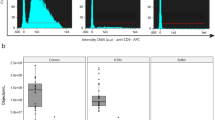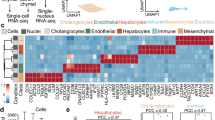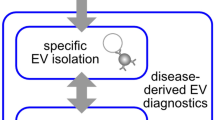Abstract
BY measuring the electrophoretic mobility of cells, Ambrose, James and Lowick1 have demonstrated that the average charge density of neoplastic kidney and liver cells is almost double that of the homologous normal cells.
This is a preview of subscription content, access via your institution
Access options
Subscribe to this journal
Receive 51 print issues and online access
$199.00 per year
only $3.90 per issue
Buy this article
- Purchase on SpringerLink
- Instant access to full article PDF
Prices may be subject to local taxes which are calculated during checkout
Similar content being viewed by others
References
Ambrose, E. J., James, A. M., and Lowick, J. H. B., Nature, 177, 576 (1956).
Purdom, L., Ambrose, E. J., and Klein, G., Nature, 181, 1586 (1958).
Ambrose, E. J., and Easty, G. C., Unio Internationalis Contra Cancrum Acta, 16, 36 (1960).
Anderson, N. G., Science, 117, 627 (1953).
Dulbecco, R., and Vogt, M., J. Exp. Med., 99, 167 (1954).
Abramson, H. A., Moyer, L. S., and Forin, M. H., “Electrophoresis of Proteins and the Chemistry of Cell Surfaces” (Reinhold Publishing Co., 1942).
Author information
Authors and Affiliations
Rights and permissions
About this article
Cite this article
BEN-OR, S., EISENBERG, S. & DOLJANSKI, F. Electrophoretic Mobilities of Normal and Regenerating Liver Cells. Nature 188, 1200–1201 (1960). https://doi.org/10.1038/1881200a0
Issue date:
DOI: https://doi.org/10.1038/1881200a0
This article is cited by
-
Search for antitumor agents among synthetic polycations (survey)
Pharmaceutical Chemistry Journal (1988)
-
Relation between electrokinetic potentials and growth in callus cultures ofTrigonella foenum-graecum
Journal of Biosciences (1987)
-
Cell contact phenomena
In Vitro (1970)
-
Changes in electrophoretic mobility of fibroblasts in tissue culture caused by 3,4-benzpyrene
Bulletin of Experimental Biology and Medicine (1968)
-
Electrophoretic Mobilities of Tissue Culture Cells in Exponential and Parasynchronous Growth
Nature (1965)



